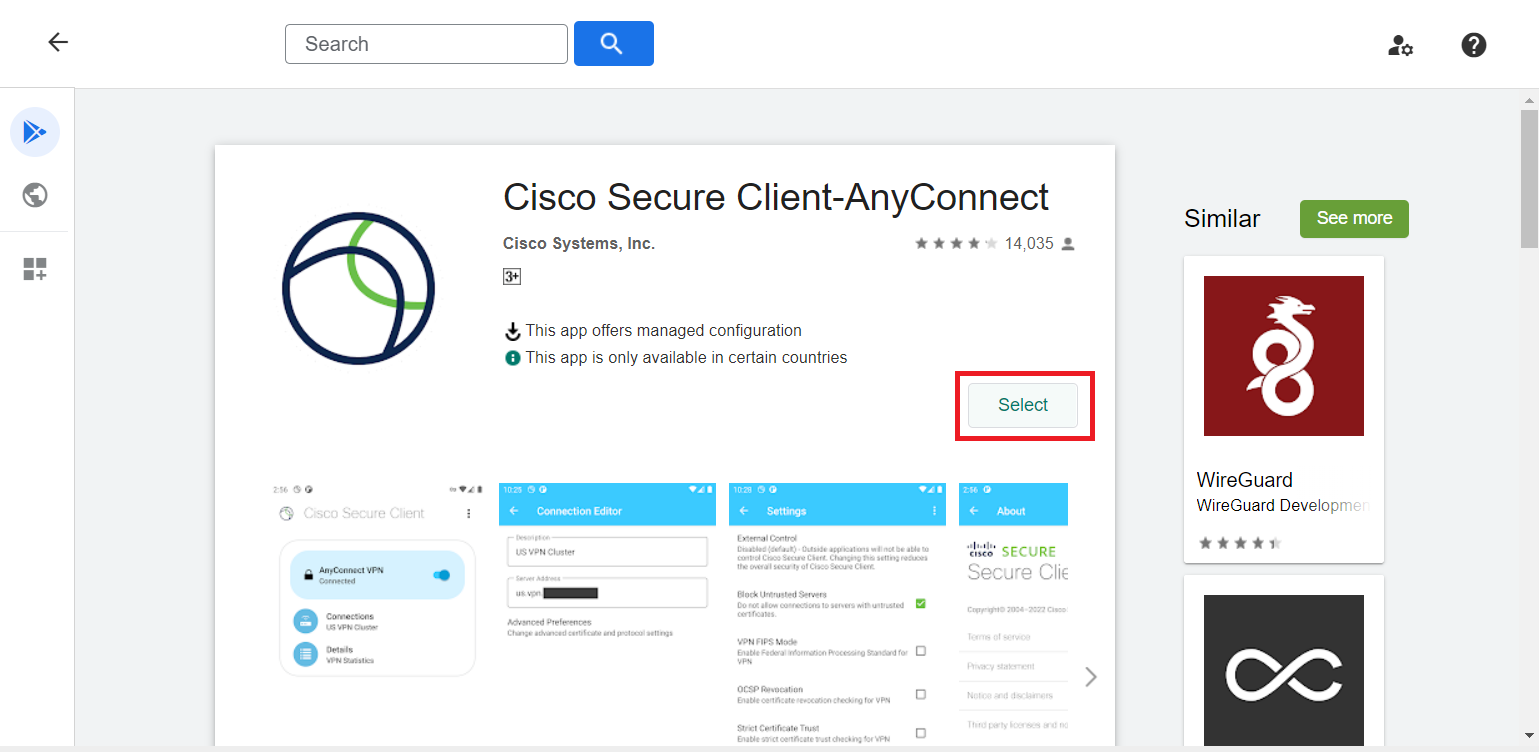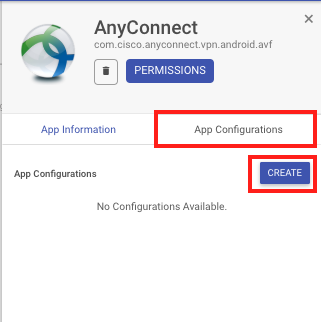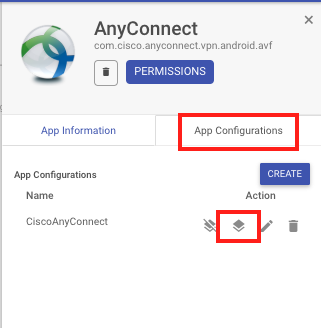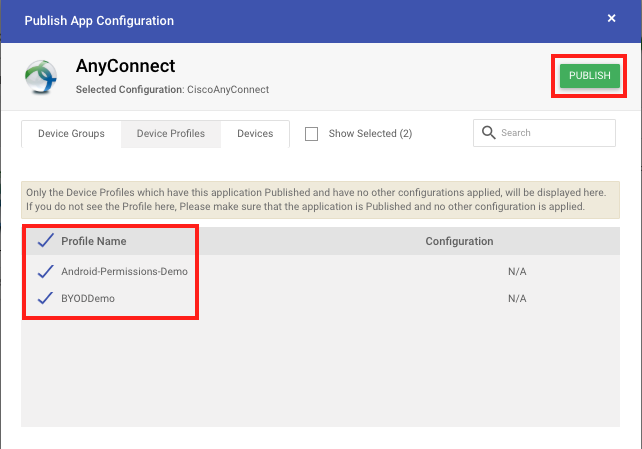Configure Cisco AnyConnect VPN for Android
- 23 Sep 2023
- 2 Minutes to read
- Print
- PDF
Configure Cisco AnyConnect VPN for Android
- Updated on 23 Sep 2023
- 2 Minutes to read
- Print
- PDF
Article summary
Did you find this summary helpful?
Thank you for your feedback!
Scalefusion and Android for Work make it easy for you to configure Cisco AnyConnect VPN on your managed Android devices. Follow the guide below to configure Cisco AnyConnect.
Before you Begin
- Complete Android for Work Setup in Scalefusion Dashboard.
- Enroll your corporate-owned devices using afw#mobilock
- Invite your Employees to enroll their personal devices.
The following feature works only for devices enrolled via afw#mobilock and where the Scalefusion application is set as a Device Owner. It will not work if you are using legacy methods to enroll the devices.
Search and Approve Cisco AnyConnect
The first step is to search and approve Cisco AnyConnect for your organization. The steps are,
- Sign In Scalefusion Dashboard.
- Navigate to Application Management > Play For Work Apps

- Click on the Add from Playstore button.
- In the Google Play dialog, search for Cisco AnyConnect,

- Click on the Cisco AnyConnect app and click on Select.

- The Cisco AnyConnect app will be added to the dashboard and can be published to devices.

Configuring Cisco AnyConnect Settings
Once you have the AnyConnect app, the next step is to configure the application. The steps are,
- Click on the AnyConnect application to see the details card.
- Click on the App Configurations tab and click CREATE to see the configuration options.

- Cisco AnyConnect gives you the following configuration options,
| Connection Name | The display name for the VPN as shown on the user's mobile device |
| Host | The URL of the headend that is the actual Cisco VPN Server. |
| Protocol | Choose between SSL or IPSec. |
| IPSec Authentication Mode | If the selected protocol is IPSec, then choose the authentication mode. |
| IKE Identity | Optional field to specify the data on how to identify a user connection. |
| Keychain Certificate Alias | KeyChain alias of the client certificate to use for this VPN configuration. |
| Per App VPN Allowed Apps | Deprecated. Use the setting below |
| Per App VPN Allowed Apps | Specify a comma-separated list of applications that should be routed through VPN. |
| Per App VPN Disallowed Apps | Specify a comma-separated list of applications that should not be routed through VPN. |
| Allow Apps to Bypass the VPN Tunnel | Choose if you want the applications to bypass the VPN Tunnel. |
| Set Active | Select this to make the default selected VPN Configuration. |
| FIPS Mode | Select to enable FIPS mode for AnyConnect. |
| Certificate Revocation | |
| AnyConnect Profile | Enter the AnyConnect Profile in XML format. |
| Device Identifier | Enter the device identifier that should be reported to the VPN Server. |
| Report Hardware Identifiers for VPN Identification | Enable if the H/W identifiers like Mac and/or IMEI should be reported to the VPN Server. |
| Allow Users to Save Credentials | Choose if users can save the VPN Credentials so that they are not asked for it repeatedly. |
4. Once you have entered the values, click on SAVE to save the configuration. All the saved configurations appear in the list.
Publishing the Application and Configuration
- From the App Details card, click on the App Information tab and click on PUBLISH

- Select the Android Device Groups/Profiles/Devices where you want to publish the application and click PUBLISH

- Now click on the App Configuration tab. Click on the Publish icon.

- Select the Android Device Groups/Profiles/Devices where you have published the application in Step 3, and click PUBLISH

- This will cause the applications to be installed on the devices and then configured based on the configuration.
Please contact your VPN Service provider in case you need details on how to use a particular setting and the accepted values.
Was this article helpful?


